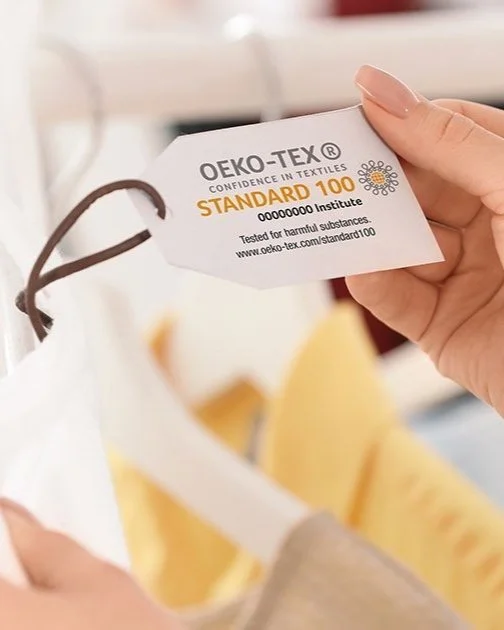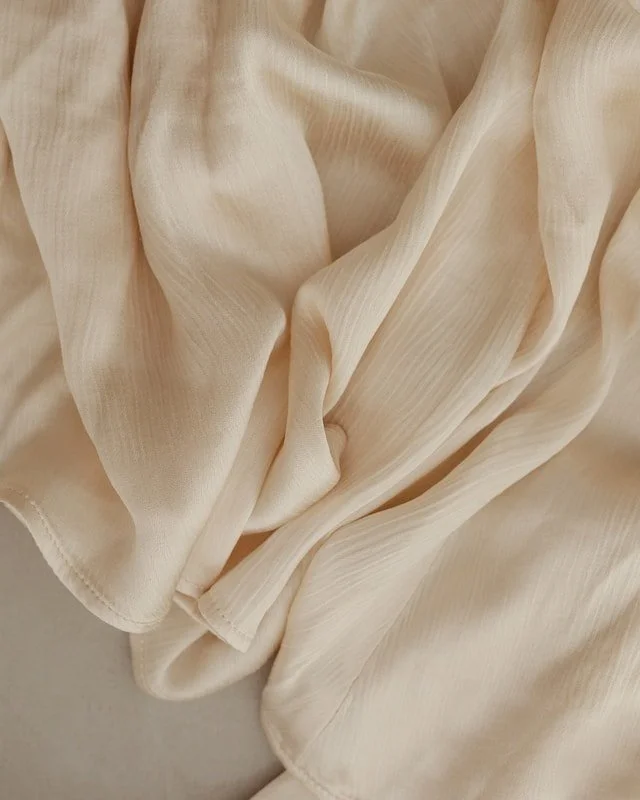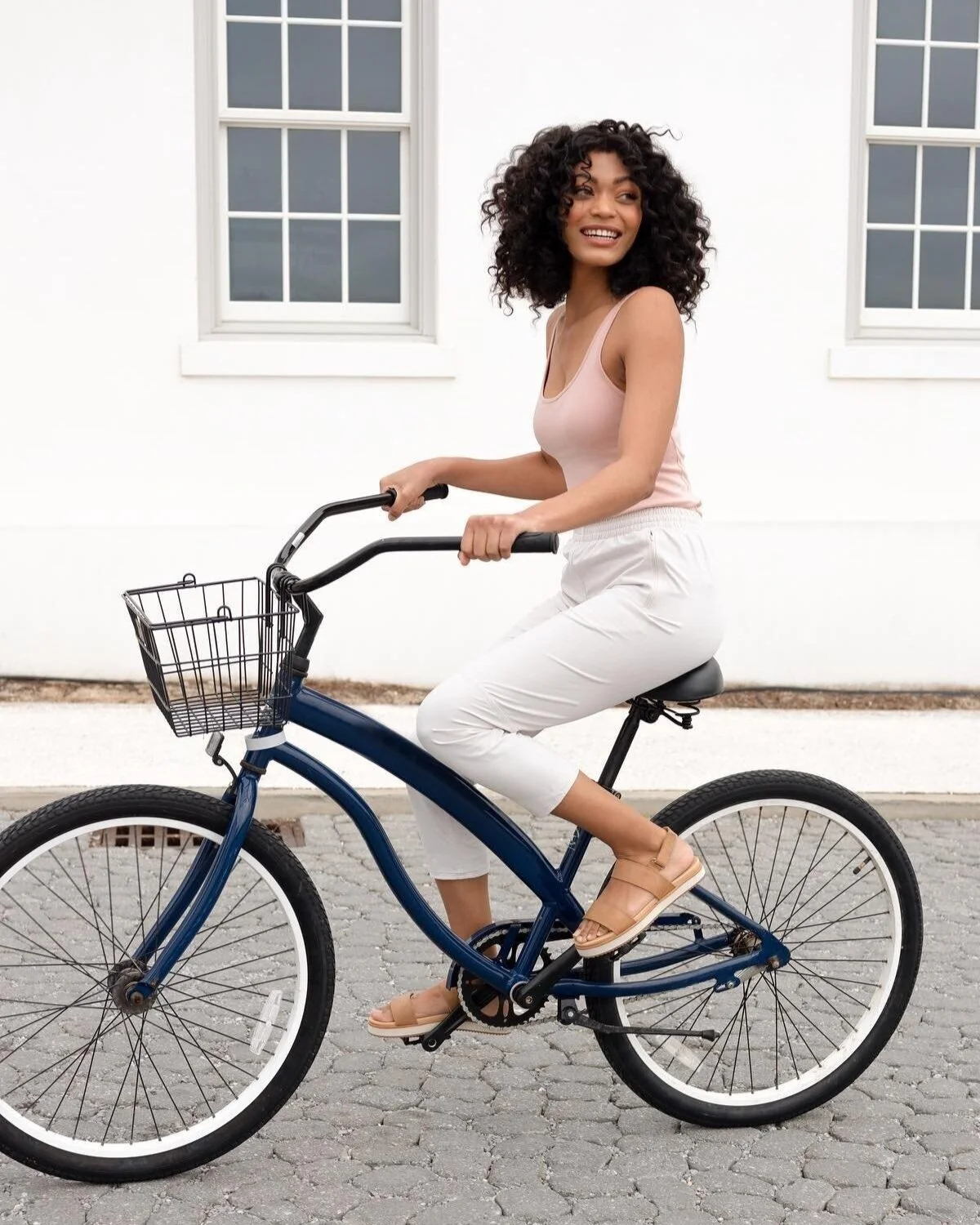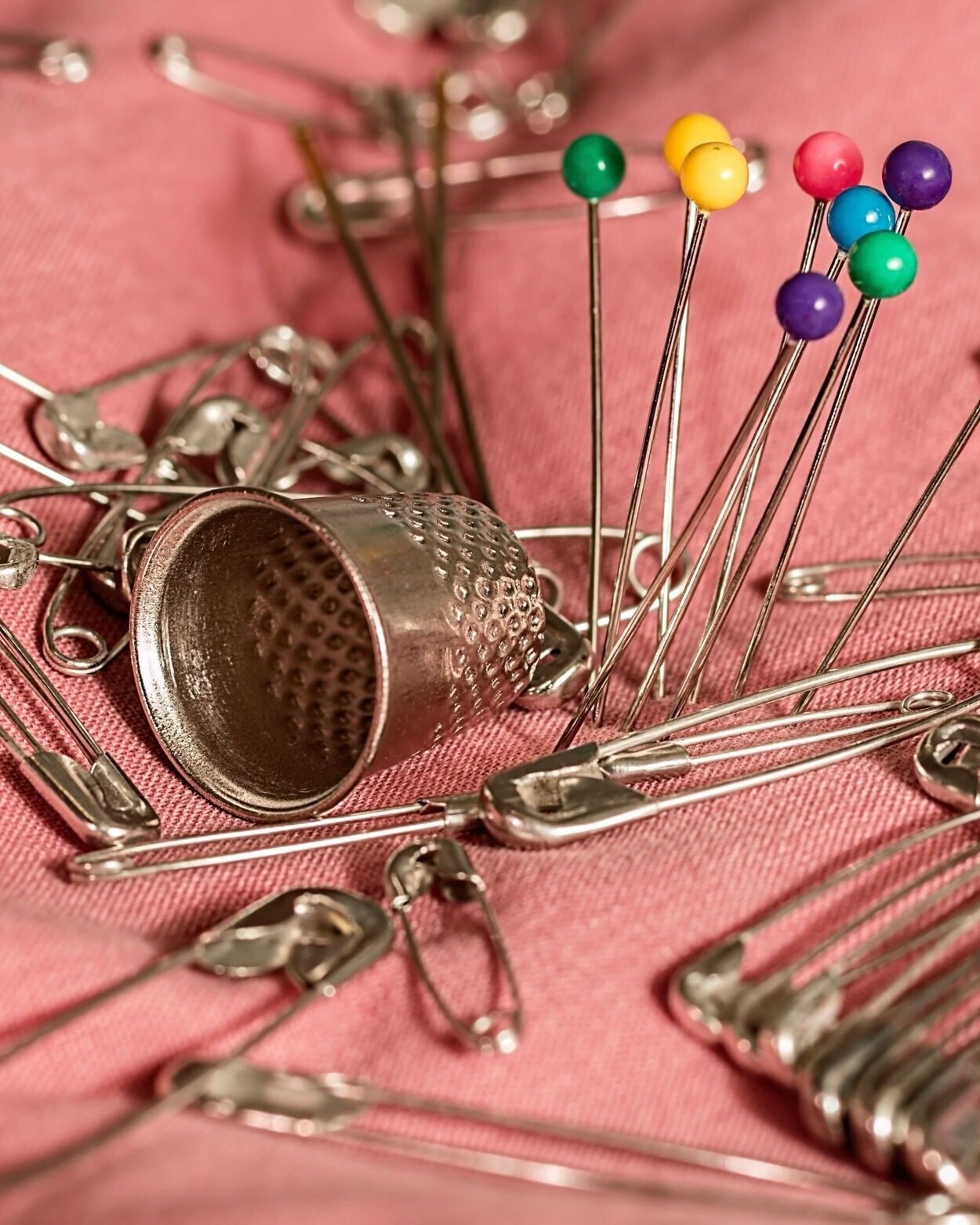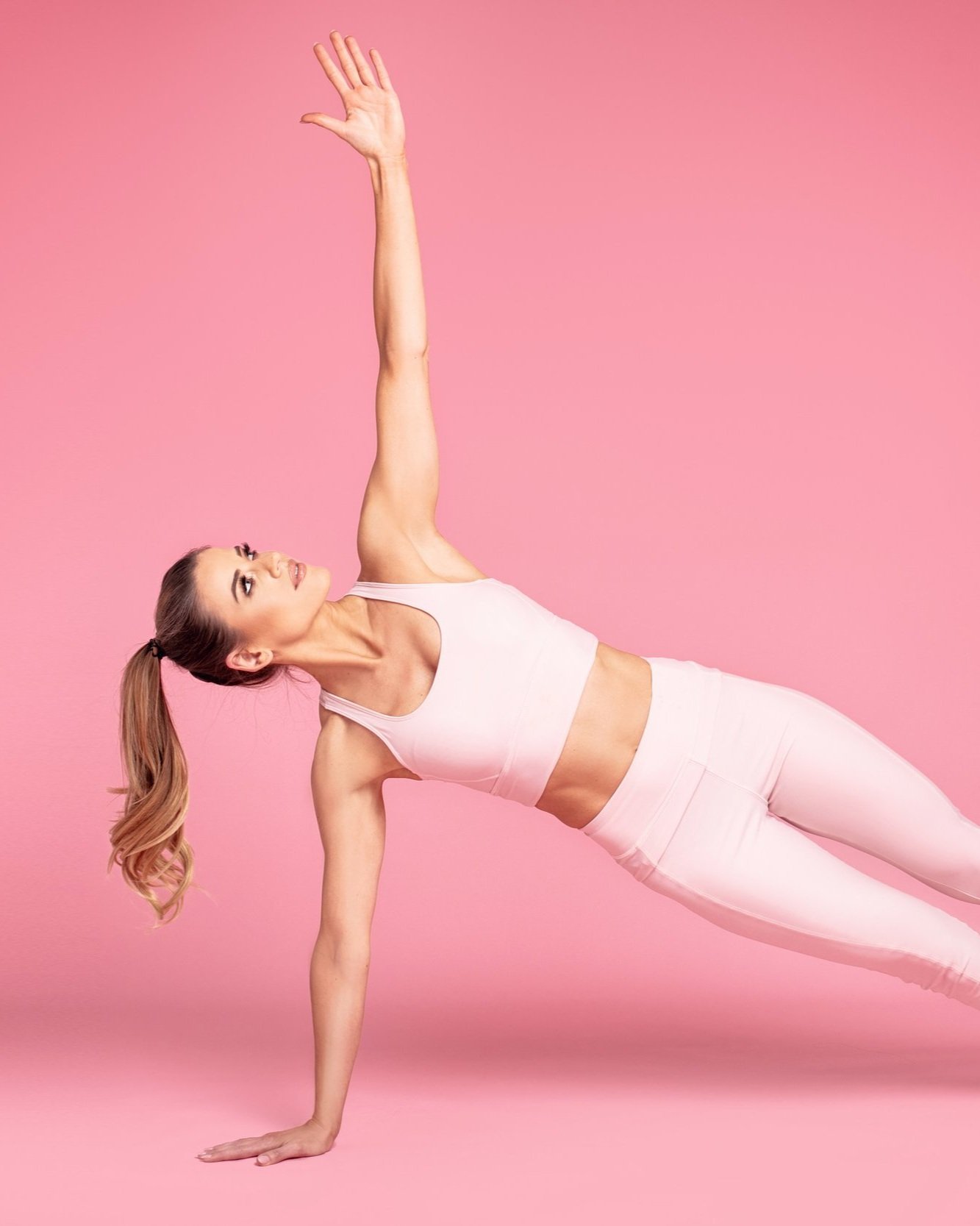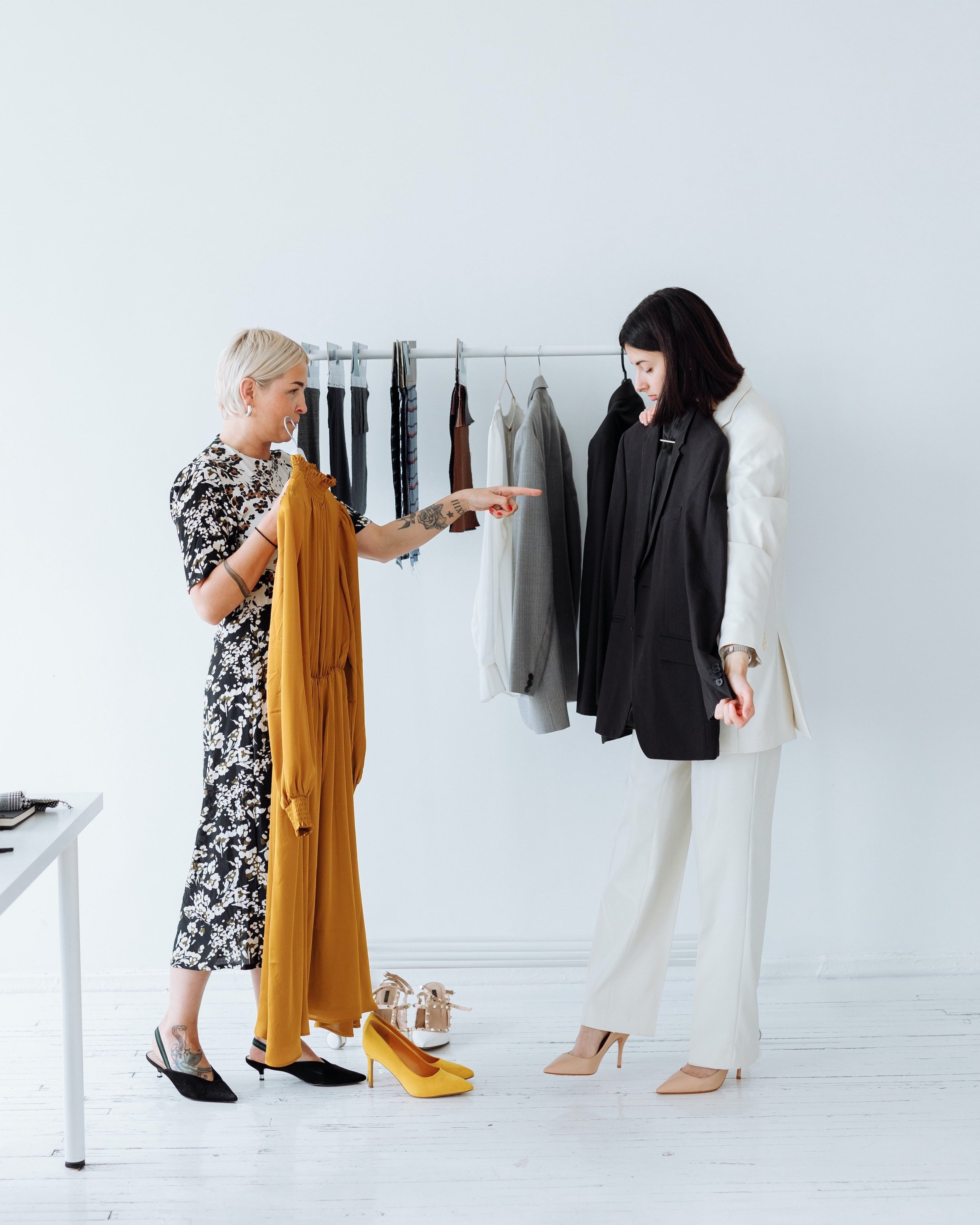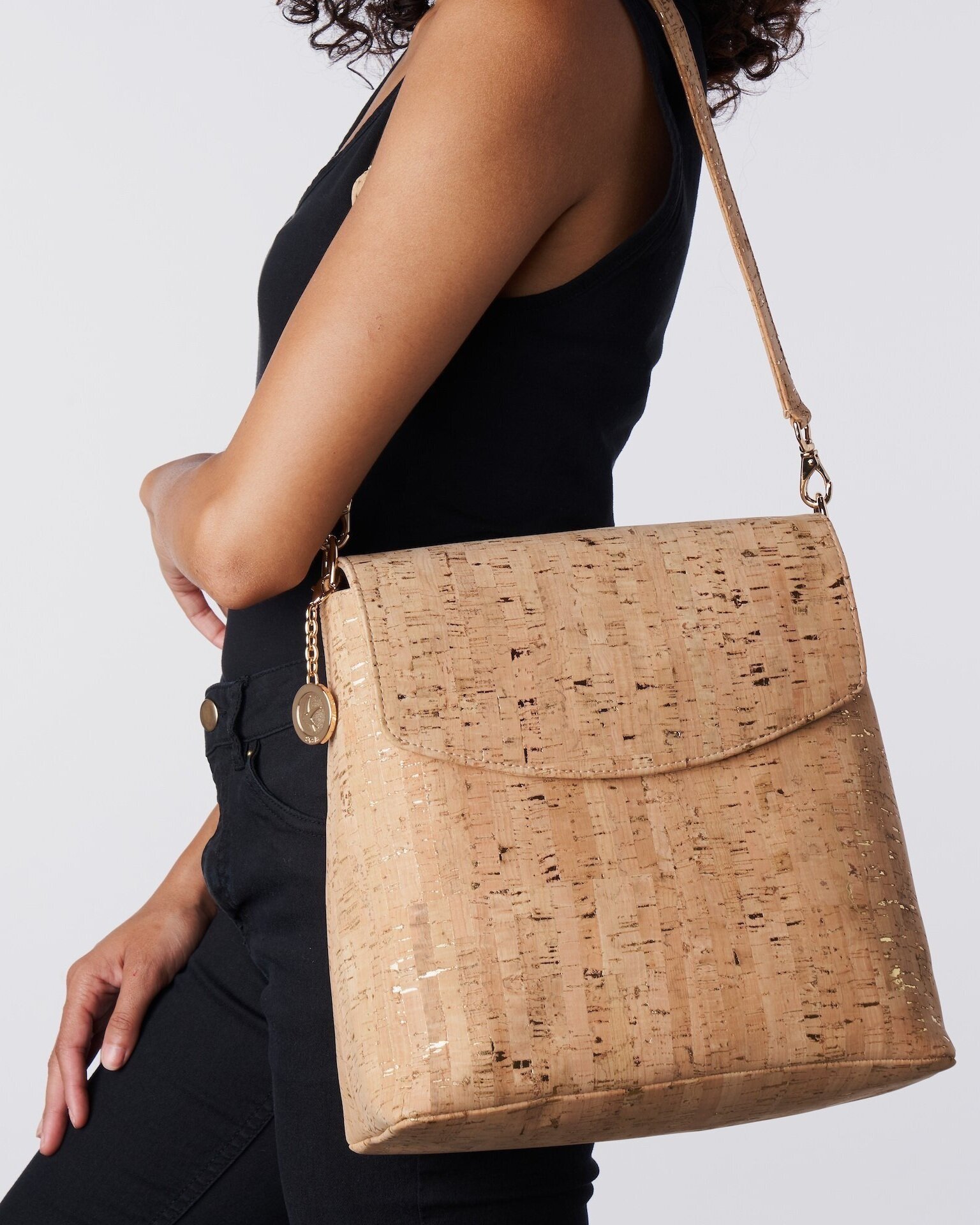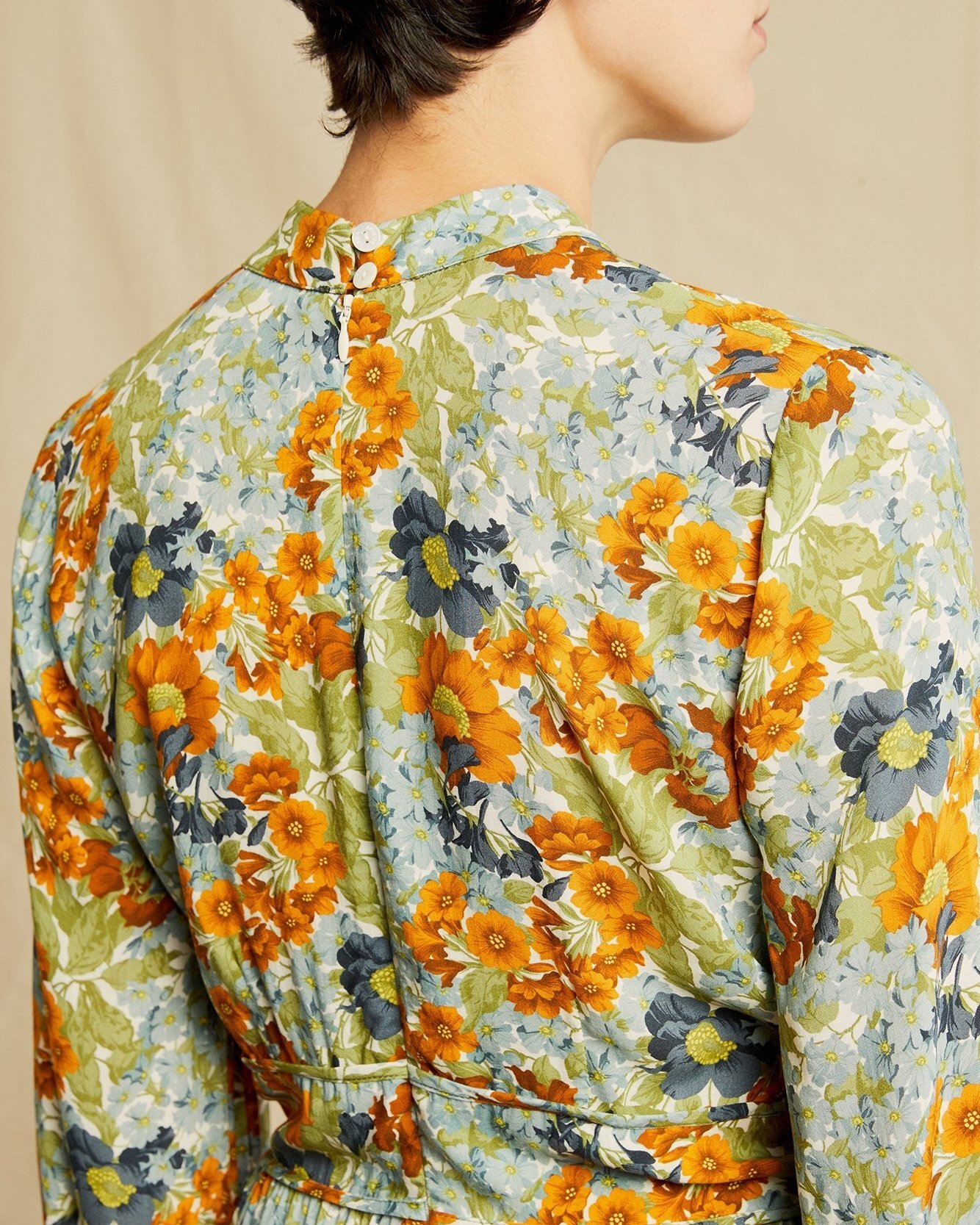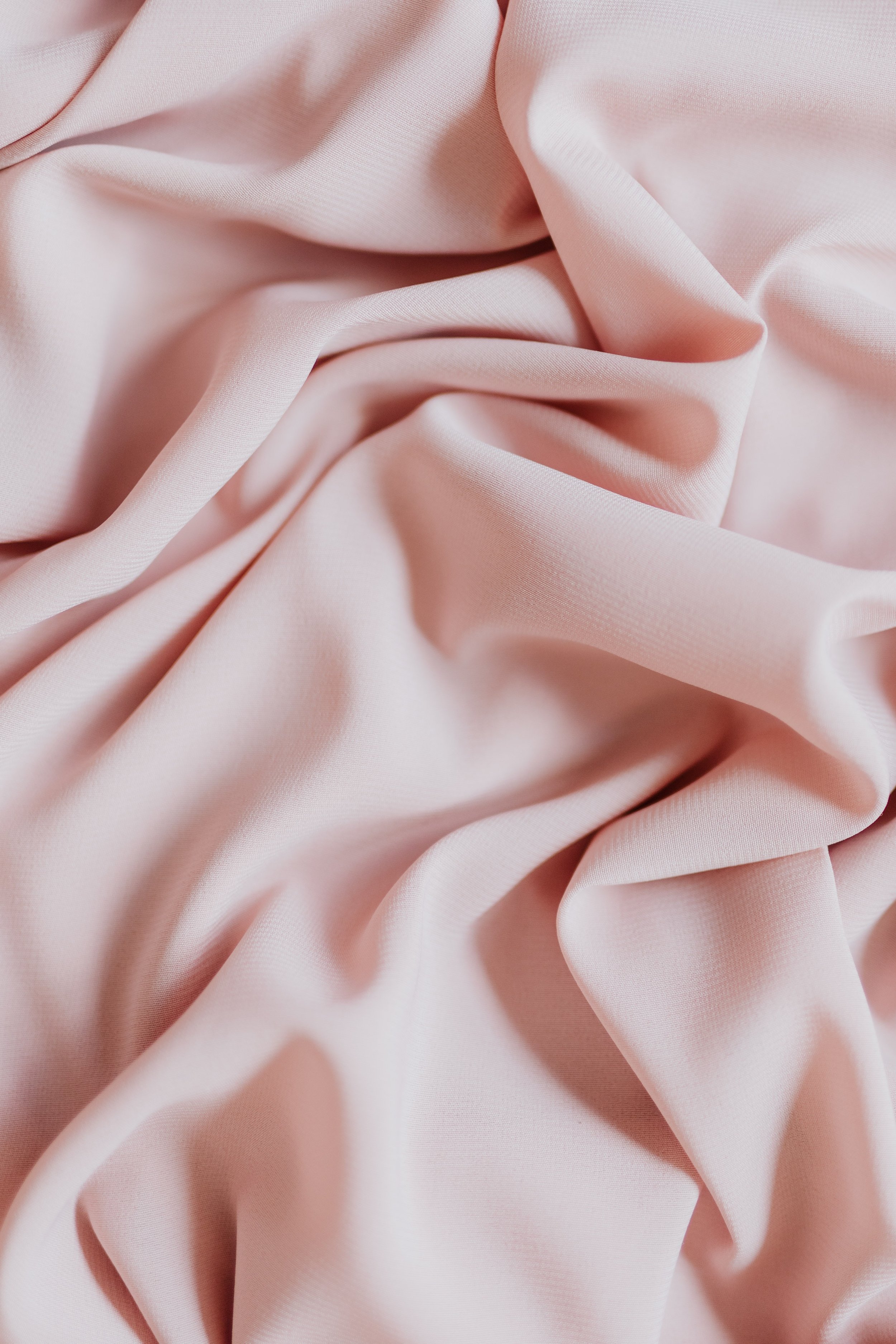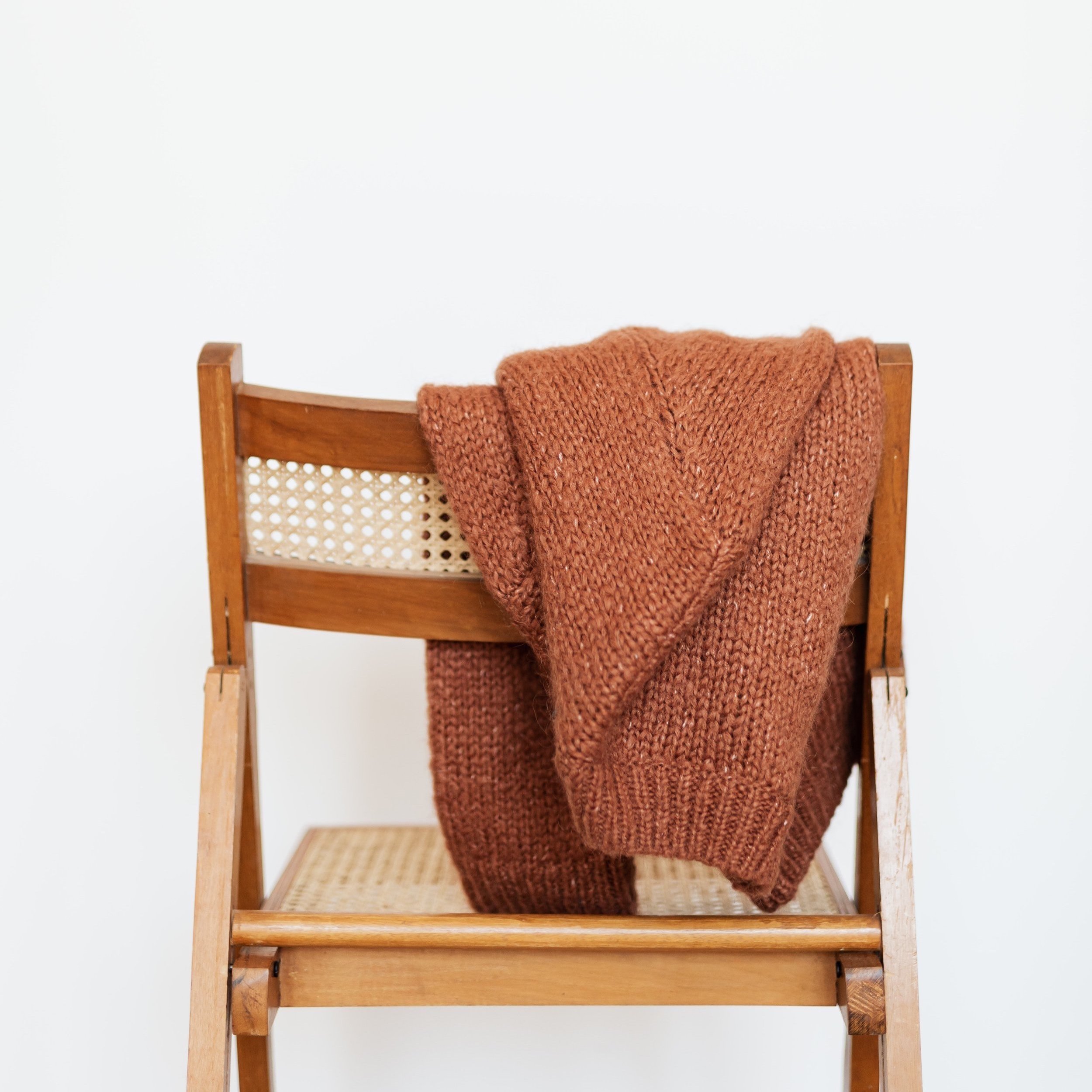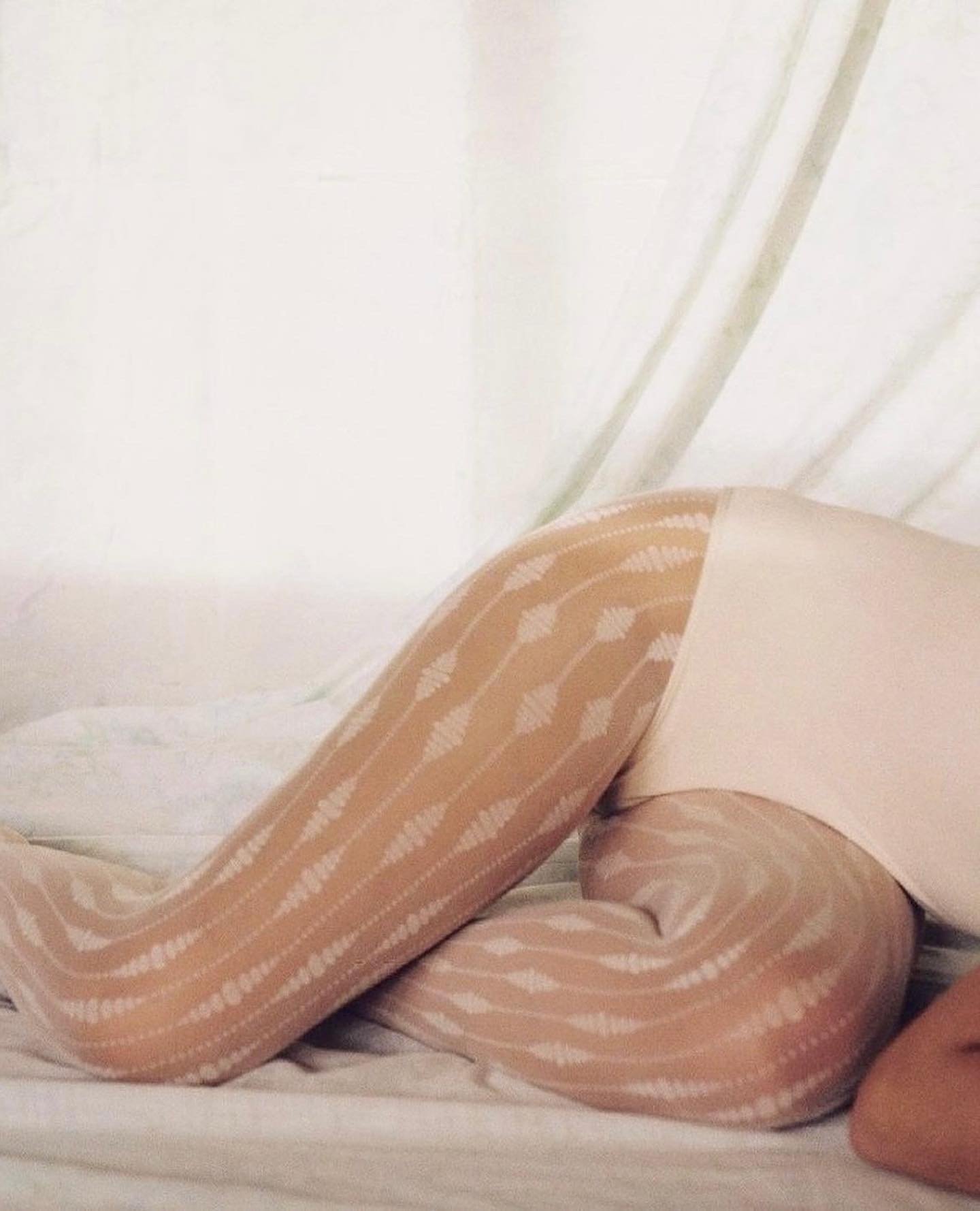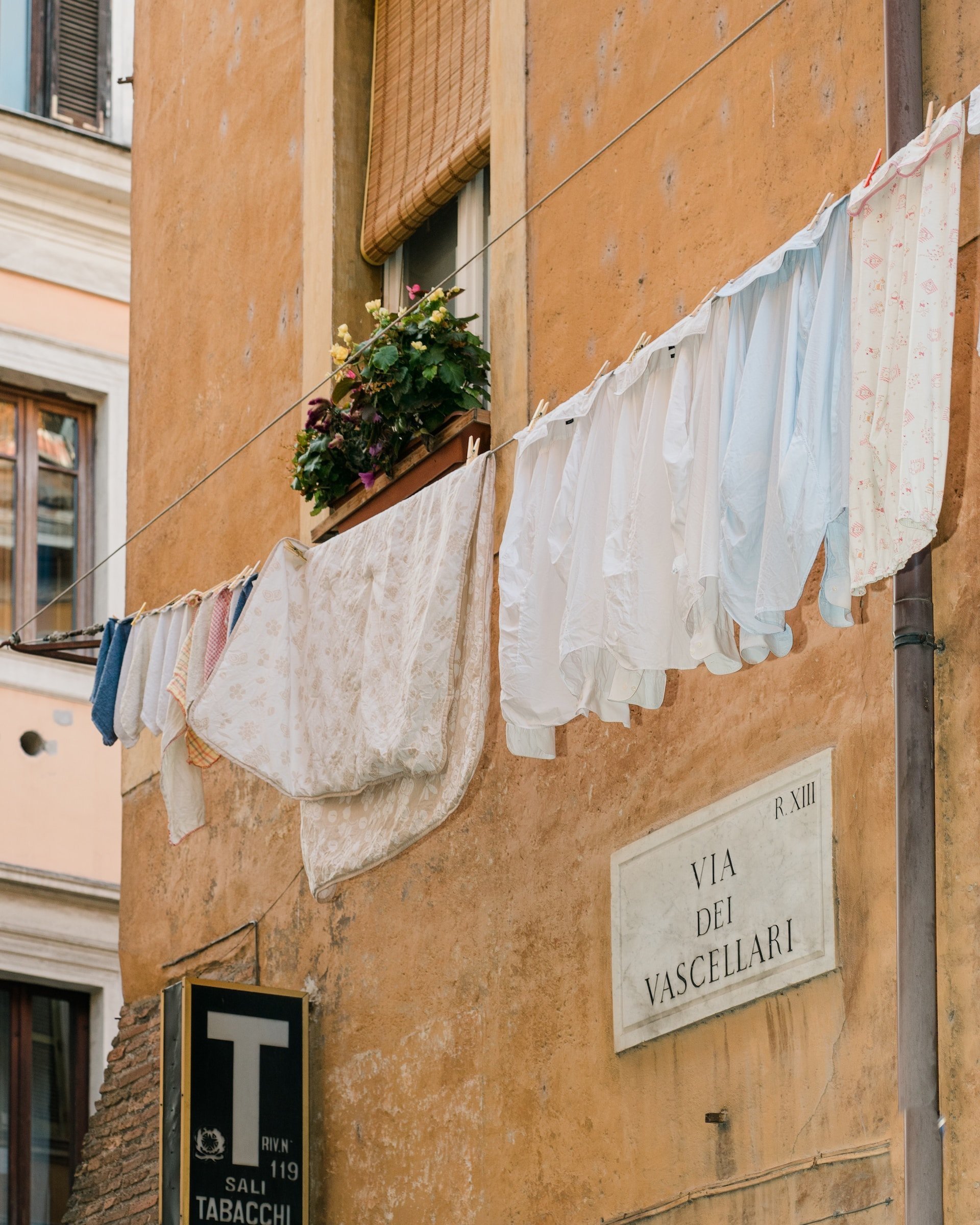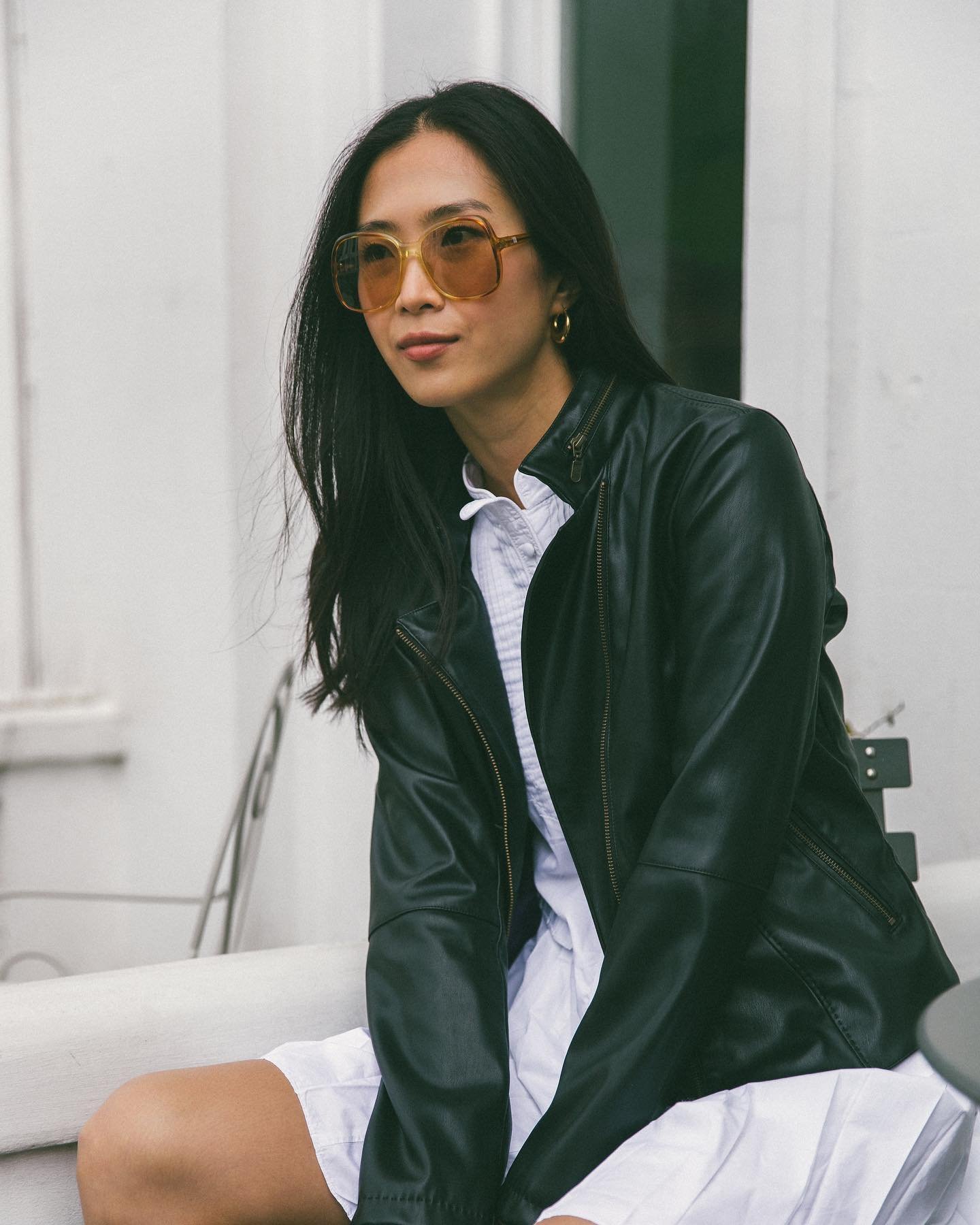Are Bamboo Products And Clothes Really Sustainable?
Image: Boody
Disclosure: Some of the links below are affiliated; we may earn a small commission if you click through and make a purchase. We only feature brands that align with our values and contribute to a better world. Thank you for supporting these brands - and us!
Is Bamboo Sustainable?
If you are interested in sustainable fashion, you have probably come across brands selling clothes made of bamboo that were marketed as eco-friendly options.
Bamboo fabrics have become more and more popular in the fashion industry because bamboo is seen as a material with many beneficial properties, and it can be used to make all kinds of textiles.
Fabrics made of bamboo are soft, temperature-controlling, breathable, and stretchier than cotton. Many people also believe that they are eco-friendly fabrics that do not harm the environment.
But how true is this belief? How sustainable are bamboo fabrics and bamboo products in general?
In this article, you will learn about how bamboo products and fabrics are made and how eco-friendly they are. We will help you know which types of bamboo you should avoid and which ones you can feel good about purchasing.
What is bamboo and how is it made?
What is bamboo?
Bamboo is a woody plant that belongs to the grass family Poaceae. There are around 1,400 different species of this plant, and it grows in various regions around the world, from tropical and subtropical to mild temperate regions.
It is a fast-growing perennial that can attain heights up to 130 feet (40 meters), and some species grow as fast as one foot (30 cm) per day.
This plant has been used for many purposes over time around the world, and it is estimated that it was first used as far back as 7,000 years ago.
More than 5,000 years ago, Chinese people used to build treehouses from bamboo, and between the 16th and the 11th centuries B.C., many household items as well as arrows and bows were already made of bamboo.
Bamboo was also cut into strips to be used for writing, way before paper was invented. Between 206 B.C. and 220 A.D., humans successfully created paper and books out of this plant, which was fairly cheap at the time. In the 600s, some musical instruments were made of bamboo.
A few centuries later, during the Song Dynasty, Chinese people started to make clothing items from bamboo, like hats, rain capes and shoes. The plant was a great source of food since it has many nutritional benefits. Humans also used bamboo to produce tiles and rafts, and to burn as firewood.
In the 1300s, during the Ming Dynasty, bamboo became a common interior building material. It was used to create flooring and beds.
As millennia and centuries passed, humans learned to use bamboo to make items that were useful in their daily life. The plant has had so many commercial applications and uses!
Today, products made from this plant are found in homes all around the world. Bamboo is used as a building material, but also to make furniture, paper, clothing and home goods. It is popular in traditional Chinese medicine, and it can even be used to produce different kinds of fuels.
The global bamboo market is an important industry that was valued at more than $53 billion in 2020, and it is estimated to grow by 5.7% each year between 2021 and 2028. China is the largest bamboo producer in the world, followed by India.
image from Guadua Bamboo
How are bamboo products and clothes produced?
Producing bamboo fabric is very different from making basic bamboo products, such as bamboo straws or cutlery.
How do we make basic bamboo products?
Bamboo plants generally take between four and five years to grow and become dense enough to be harvested. When they reach their optimal size, farmers cut the bamboos individually and send them to manufacturers.
The plants are cut into lengthwise strips for processing, and machines are used to remove the outer layer of the bamboo. After that, several strips are bundled up together and put into a high-pressured steamer, which changes the color of the plant.
The steamer cooks the sugar contents and turns the strips into caramelized bamboo strips. Because of the high moisture levels, the whole process also makes them expand and become more durable.
The bamboo strips are then dried, sorted based on their color, and inspected to make sure they won’t break easily. The next step involves gluing the bamboo strips together using a hydraulic press, which creates entire panels made of bamboo.
Finally, specialized machines are used to cut the panels into customized shapes, depending on the final product that is supposed to be made. After a few additional quality checks, the panels are molded into finished products.
How are bamboo fabrics made?
When we look at bamboo fabrics, it seems like they have nothing to do with the original plant. That is because the plant goes through an entirely different production process compared to other bamboo products.
There are two main production methods to make bamboo fabrics, each one leading to a different type of fabric.
Bamboo Viscose or Rayon
Nowadays, the majority of bamboo fabrics you can find on the market are bamboo viscose, which is manufactured using the same process as rayon.
To produce bamboo viscose, cellulose is extracted from the wood pulp of the plant: bamboos are broken down into small chunks and are then cooked with chemical solvents to remove the cellulose.
The next step involves compressing the extracted cellulose into sheets, exposing it to carbon disulfide, and filtering it. After that, it is pushed through a spinneret, which creates strands that are then immersed in sulfuric acid.
This process produces filaments, and these are spun into yarn. Finally, the yarn will be woven into fabric.
Bamboo Linen or Lyocell
The second method we can use to produce bamboo fabric is mechanical, using a closed-loop production process.
Initially, the bamboos are crushed into a mush, and they are broken down using natural enzymes. Doing this does not chemically alter the structure of the cellulose.
The fibers are then washed and combed out, and finally, spun into yarn. The resulting fabric looks and feels like linen, and it is not as soft as bamboo viscose.
This production method is more expensive and labor-intensive, but as we will see later, it is a lot more sustainable than producing bamboo viscose. Unfortunately, it is very difficult to find bamboo linen on the market at the moment.
How sustainable is bamboo?
Again, due to how different bamboo products and bamboo fabrics are made, we need to separate them to better understand when bamboo is sustainable, and when it is not.
How sustainable are bamboo products?
Let’s focus on bamboo products in general. These could include all kinds of items made of bamboo, like cutlery, straws, bowls, furniture, or even paper.
Why Bamboo Can be an Eco-Friendly Material
One of the main advantages of bamboo compared to other materials is that it is the fastest growing plant on the planet. It means that it is an extremely renewable resource!
Buying an item made of bamboo instead of normal wood is a lot more sustainable because bamboo regrows in three years, while trees can take decades to regrow once they are cut. Not to mention that bamboo self-regenerates from its own root system, so there is no need to replant it.
It also reduces the demand for tropical wood, which takes the pressure off forests in many parts of the world where there is massive deforestation. And the plant can even thrive in subpar soil, where others would not be able to grow.
As it is naturally pest-resistant, bamboo does not need any pesticides or herbicides to grow, and it needs very little water compared to many other crops.
Another benefit of bamboo is that the plant’s roots develop to create a fibrous network underground, which helps improve the soil quality and prevents soil erosion.
Bamboo also produces 35% more oxygen and absorbs five times more CO2 than similar plants, which is great for mitigating climate change.
Finally, one of the main reasons why bamboo products are seen as eco-friendly is because they are 100% biodegradable. It means that you can compost them at the end of their life, and if they get lost in nature, they will decompose fairly quickly unlike plastic.
However, the Way We Produce Bamboo is Very Unsustainable
As we just saw, bamboo in itself can be a sustainable raw material to create all kinds of bamboo products. Unfortunately, the way we produce it in our societies is far from being eco-friendly!
The demand for bamboo products has drastically increased over the past decades. To meet this growing demand, very large areas of land are being cleared to create new bamboo forests.
This is crazy because, as we mentioned previously, producing products out of bamboo was supposed to reduce deforestation since the demand for other types of wood is relatively decreasing!
The massive deforestation we are observing to create bamboo forests is leading to biodiversity loss and displacement of local wildlife.
Another issue is that these newly created forests of bamboo are monocultures, which means that bamboo is the only plant that is grown and all other varieties are eliminated.
And just like with any monoculture, the whole local ecosystem disappears. All the animals and plants that used to live there and rely on the ecosystem for food and habitat either die or need to migrate somewhere else.
Moreover, monocultures can attract pests more easily. For instance, if a bug loves bamboo, it will have such an abundance of bamboo in a monoculture that it will be able to multiply and it may cause problems to the new forest.
This is part of the reason why bamboo producers massively use pesticides and other chemicals to grow their bamboo and keep pests away. But these chemicals are also widely used simply to increase yields, which is sad because bamboos do not even need them to grow!
Of course, pesticides and herbicides are very detrimental to the environment as well as to farmers’ health. Unfortunately, there is no regulation regarding the use of pesticides in this industry and in the countries where bamboo is generally produced.
Another issue caused by this mass-scale bamboo production is that the harvesting methods are often unsustainable as they lower the regenerative rate of new bamboo shoots.
Bamboo is also at risk from overharvesting. According to the United Nations, about half of all the varieties of bamboo are in danger of being eradicated or already extinct.
How about bamboo fabric?
Since bamboo fabric is made with bamboo plants, we need to take into account all the environmental impacts of growing bamboo that we just mentioned previously.
But according to the FTC, when the plant has been chemically processed to become a fabric, “there is no trace of the original plant left”. The production process of the fabric itself also causes environmental issues that we need to be aware of.
If we look at bamboo lyocell (made using a mechanical processing method in a closed-loop system), the production process is not perfect, but it can be sustainable.
The bamboo is broken down using natural or non-toxic enzymes, and the solvents are reused again and again and do not end up in the environment. Water waste is also minimal.
However, most bamboo fabrics on the market are bamboo viscose (made using a chemical processing method). This production process is very energy-intensive and wasteful, as the solvents are not reused.
It also involves using a lot of hazardous chemicals, including caustic soda and carbon disulfide. Both of these are harmful to human health, and the second can be a threat to aquatic life when it is released in water.
Thus, the majority of bamboo fabrics are made in a way that exposes workers to dangerous substances, so producing them is not only unsustainable but also highly unethical!
Image: Ettitude
So, should you buy bamboo? And where?
Unfortunately, there is no simple answer to the question: are bamboo products and clothes really sustainable? Bamboo has the potential to be a sustainable material, but depending on how it is produced, it can also be very detrimental to the environment.
How to find sustainable bamboo?
When looking for bamboo products, it can be difficult to know whether the plant was grown and harvested sustainably and ethically.
Most bamboo products are made in China where there are human rights issues and almost no environmental regulations. Supply chains are also difficult to trace and there is a huge lack of transparency in the bamboo industry.
As we saw, mass-scale bamboo production is very unsustainable, but you can choose bamboo products that were made in a more eco-friendly way.
To do that, look for products made from certified organic (like with USDA) and FSC-certified bamboo. These certifications ensure that the plant was grown sustainably, in a way that controls chemical use and prevents land abuse.
Try to also buy products that received the Fairtrade certification to make sure that workers in the supply chain have been treated humanely and paid fairly.
If you want to buy clothing, say no to bamboo viscose (or bamboo rayon) as its chemical-based production process is very unsustainable and unhealthy for workers.
Instead, look for bamboo linen (or bamboo lyocell), which is a lot more eco-friendly. This fabric was branded Monocel®, and it is made mechanically in a closed-loop system in which few chemicals are used, and water and solvents are constantly reused.
If you cannot find bamboo lyocell (few brands are using it), Tencel might be a great choice for you! It is made from sustainably farmed eucalyptus trees in a closed-loop system.
Finally, look beyond the marketing and always buy from a brand that is transparent about where its bamboo is from and how it is produced.
A Few Brands Selling Sustainable Bamboo Products and Clothing:
If you want to buy bamboo clothes and home textiles and make sure they are made sustainably, these brands have you covered!
Ettitude
Ettitude has a great selection of loungewear, bedding and towels made of bamboo lyocell using a non-toxic closed-loop system. The brand is a member of 1% For The Planet and certified climate-neutral.
BAM
BAM, a UK-based B-Corp certified brand, is dedicated to crafting sustainable and eco-friendly clothing made from bamboo for both men and women. Their thoughtfully designed collections cater to outdoor enthusiasts, yoga practitioners, and adventure seekers, offering a blend of functionality and style. BAM has set a goal to achieve a net positive impact on people, nature, and the climate by 2030, showcasing their strong focus on sustainability and ethical responsibility.
Boody
Boody sells sustainably produced, comfy clothing essentials all made with bamboo. The bamboo Boody uses is produced without fertilizers, pesticides or artificial irrigation, and it comes from FSC-certified forests. It is grown using rainwater and all the water used is recycled and reused. Boody is a B Corp certified business and it only works with factories that are Fair Trade certified. The factories use innovative computer knitting machines to create the garments, thus minimizing fabric wastage.
Made Trade
This is your stop if you want many different sustainably made bamboo products! Made Trade has recycled bamboo home goods and bamboo kid’s, women & men’s clothing. They are known for their great customer experience where you can sort items by values like POC-owned, vegan, fair trade, etc.
Encircled
Their eco-friendly Rayon from Bamboo rib knit is made from Bamboo fiber grown without pesticides and fertilizers. Dyes are hypo-allergenic and OEKO-TEX® Standard 100 certified to be free of harmful chemicals. Encircled is also a Certified B Corporation.
Elate
A totally vegan and animal testing free brand, Elate sells refillable blush and eye shadow compacts. Refills are sent out in seed paper envelopes that grow flowers when planted – super cute. The brand also offers lipsticks and other makeup with less plastic packaging, made from Forest Stewardship Certified bamboo and glass.
use code SUSTAINABLYCHIC for 10% off
About the Author
Eva Astoul is a French freelance writer, specializing in content related to sustainability, simple living, and a growth-focused healthy lifestyle. She runs her own blog, Green With Less, to inspire people to live a more minimalist and sustainable life.
MAKE SURE TO PIN THE PHOTO BELOW TO SAVE THIS POST FOR LATER!
WANT TO FIND MORE SUSTAINABLE BRANDS?
The Brand Directory features hundreds of sustainable brands approved by us!
We have broken everything down by category for easy shopping, along with discount codes unique to Sustainably Chic viewers.







